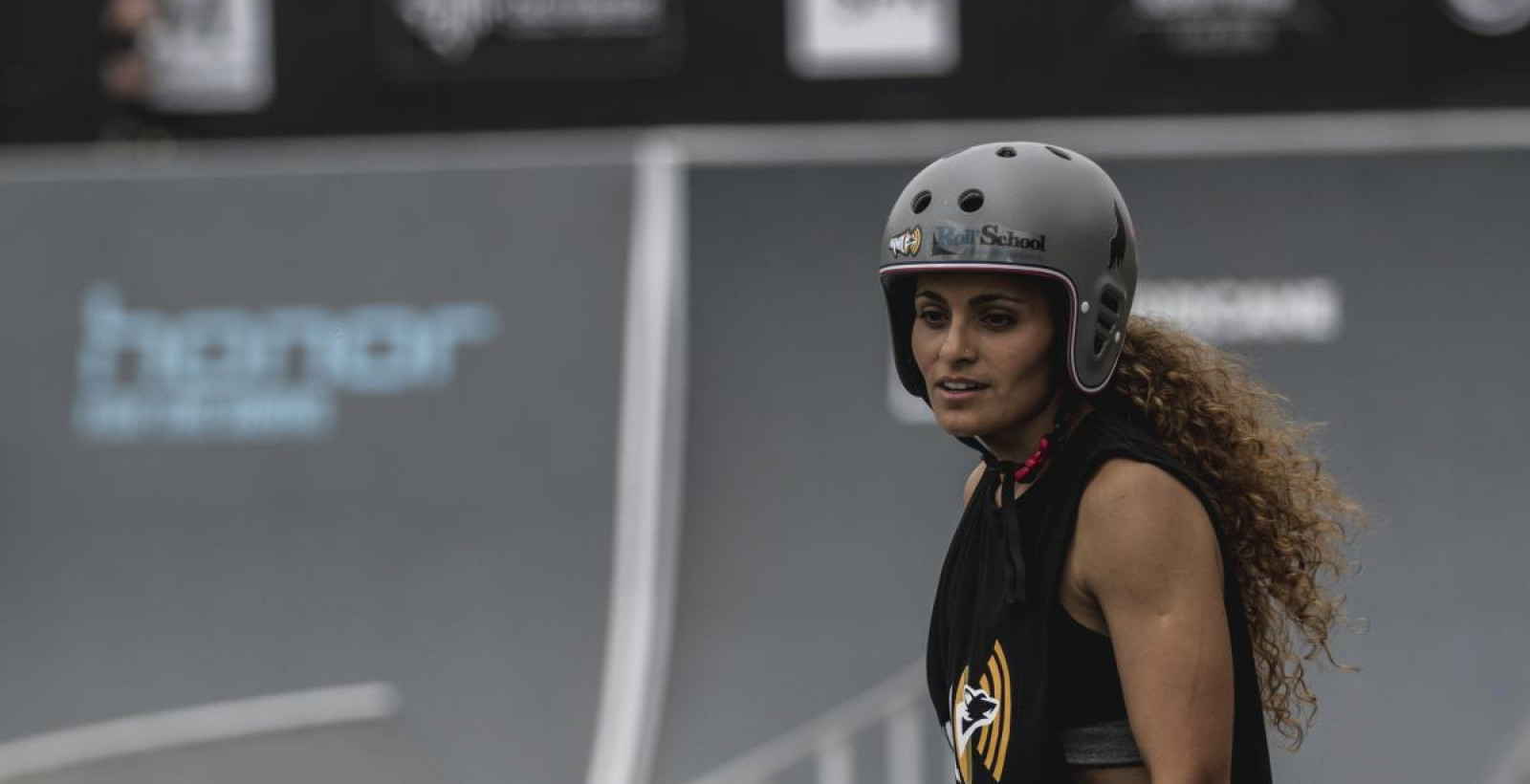In conversation with Precy Verdier
Women’s action sport has grown alongside FISE through the years. Huge thanks must go to the role played by Precy Verdier, Women’s Roller athlete and advocate, as she inspires girls to take to the ramp.
There’s still a long way to go, but Precy has been instrumental in getting women’s categories included across sporting events. She’s come a long way since competing with the boys – and here she shares part of her skating journey.
How did you get into Roller?
It’s a funny story! I was in McDonalds in a city called Orange, and there was a skatepark nearby. A mum came into McDonalds and she was so happy and proud because her daughter had skated the ramp. I was curious, so I went to watch her skate. There was the ramp and lots of bladers practising (Jules Pigerol, Mathieu Bonnal, etc.). It was so cool and amazing – I thought how courageous the woman’s daughter was, and I wanted to be like her and skate with those cool guys!
When did you start skating?
I started blading when I was 16/17 – very late, because blading was not really in my social culture. It was very hard to start in a sport with a lot of boys; my mum and people around me didn’t see it as a good thing for a woman to do.
At the beginning, I went secretly! Because we were a family of six children, my mum wanted me to stay home to care for the house. I had to blackmail my mum into letting me ride!
When I got my bachelor’s degree, I had the opportunity to leave home because it wasn’t possible for me to stay any longer. I told myself, I love blading. Being alone is the price to pay.In fact, blading saved me.
I chose to compete at Montpellier. I was in love with this FISE event since I’d discovered it through my friend, Medhi Demonski.
Before women’s categories, how did you compete?
When I started competition there weren’t many girls, but one of them was Aurore Costabile who was very motivated and tried to push for women’s competitions. I met other girls, too, when I competed internationally. Sometimes I competed with boys because there weren’t enough girls. It didn’t disturb me too much, although I felt bad that a girl’s level was always compared to a boy’s.
When there were enough girls to make their own category, we were not all recognised by the industry and event organisers. It was like we had to have double the skill to be recognised – be better and be pretty at the same time… it was ridiculous!
What was it like competing at FISE then (in the men’s category)?
When I started competing at FISE, there was no official women’s category – it was just a group of friends who asked to be together because they felt comfortable.
I remember the first time I finished third. I was very proud of myself: not only was I female, I happened to be injured too. But there was no podium, no medal… and that was hard to accept.
Thanks to Aurore, we started to come together in FISE. If I was in a group with another girl, I noticed I had more motivation and some people were more supportive. I thought, Every girl deserves this respect and recognition.
It’s funny, because this year I was competing with other Pro girls and I felt very old! I want to enjoy this time, so I asked to compete in two categories – Girl Pro and Veteran Boy!
How has women’s sport progressed since you started competing?
Women’s sport has progressed a lot. Now the girls can compete at high levels like the boys, and they are recognised by the industry, event organisers and the official council in France.
But I can tell you that we need more action to progress and develop action sports for women. Nevertheless, there are now two categories – amateur and professional – in the National French Championships. I developed a label Girls Welcome, for invited organisations to think about. Locally, we continue to promote the sport for girlsas it’s so important for future generations.
I think we have to work on the general mindset!
How has FISE helped women progress in action sports?
During my master’s studies in 2012, I spoke with FISE about opening up all categories in all disciplines. The project was to try and attract girls and promote them as athletes who were respected in the media – we wanted to get them good hours, good prize money, and some sponsorship.
FISE welcomed me and for the first time an official BMX category with a focus on women in media was launched. I really appreciated it; I believe this sport needs to support girls on video and elsewhere – as speakers, judges, and athletes.
FISE has helped a lot in promoting the image of women by creating opportunities to showcase them in action sport. This must be developed further – it doesn’t happen by magic! Women must be involved in promoting their passion, not just rely on the organisation. You can’t complain if you don’t act.
Do you have any advice for other women athletes?
My advice is to continue to ride with passion! It doesn’t matter what gender you are. Keep your sport alive by developing and sharing it with the younger generation.
Push yourselves in your sport, not only as an athlete. Get involved in the media: be represented as you deserve! Like I say all the time to my crew, “You are Supergirls!”
What do you think is the future of women’s sport?
I think the future of women’s sport will see a change in its image, in a different way to men’s. All sports are at a different stage of development – Skate and BMX are now part of the Olympics and women are included!
We have to continue to develop other women’s action sports together. Every single athlete, whatever their level, needs to be supported and respected in what they do and what they share. There are still those who think women have to be beautiful as well as the best , but I think we have a role that’s underestimated.
Check out Precy on Instagramfor more insight into the life of an Action Sport Ambassador !


